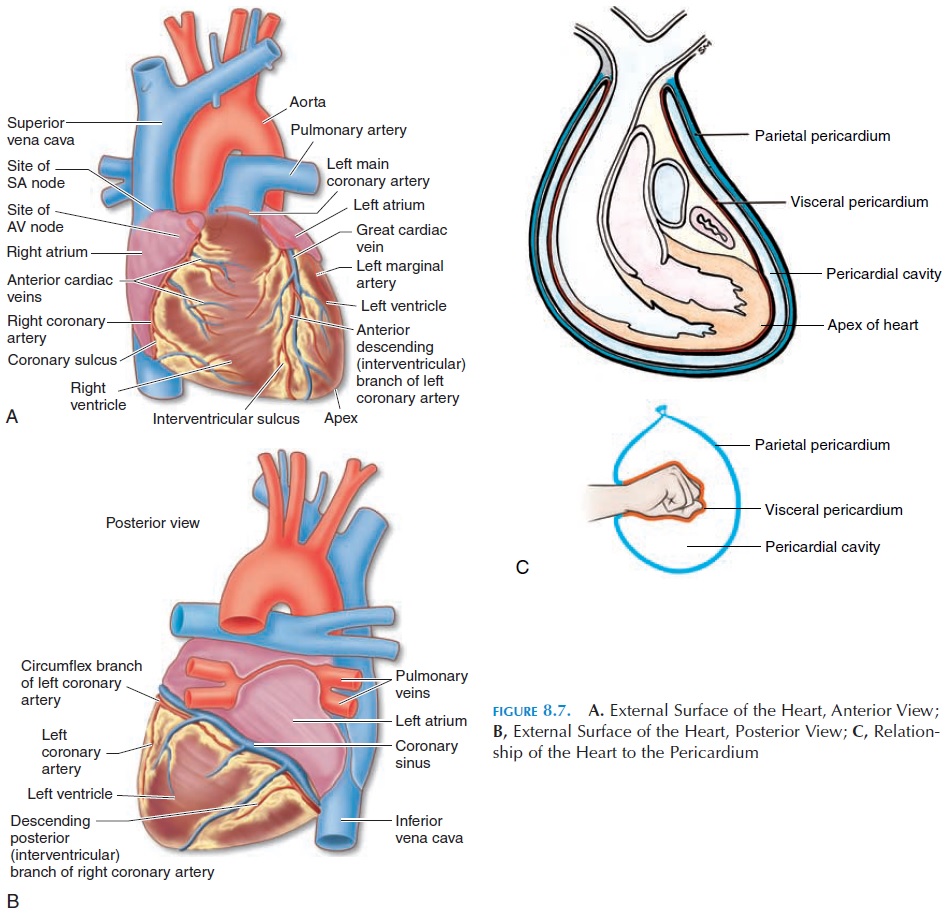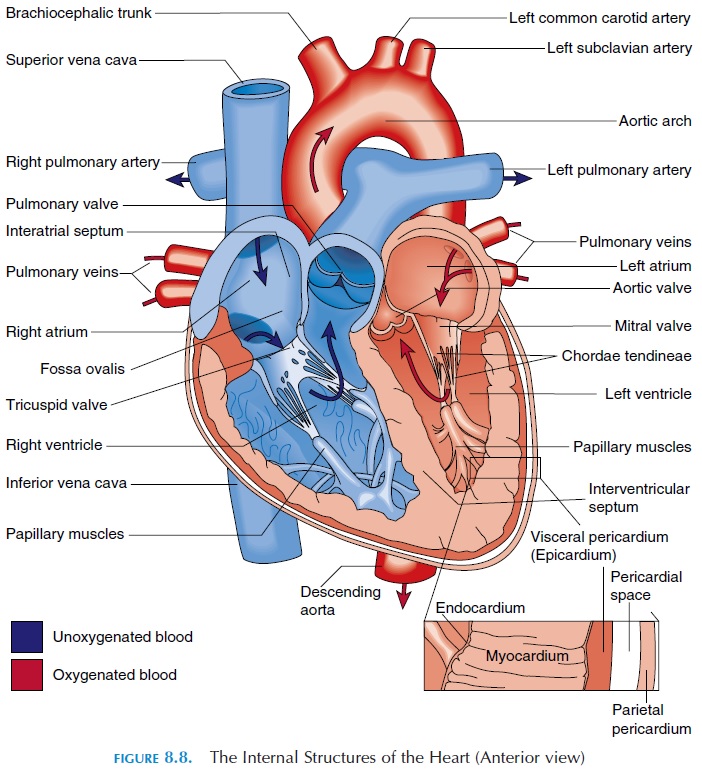Chapter: The Massage Connection ANATOMY AND PHYSIOLOGY : Cardiovascular System
An Overview of Circulation in Heart
Heart and Circulation
Each living cell in the body requires the correct temperature, adequate nutrients, and waste product re-moval, for survival. This implies that the surrounding environment—the interstitial fluid—must be monitored and changed to suit its needs. The pumping ac-tion of the heart enables blood to constantly move through the body and change the composition of the interstitial fluid. The oxygen and nutrients used for cell metabolism are rapidly replenished by the blood, while waste products such as carbon dioxide and urea are quickly removed. The architecture of the heart and blood vessels are remarkably constructed to suit their function. Blood, pumped by the heart and transported by blood vessels, circulate through the lungs to replenish the oxygen used and dispose of the carbon dioxide produced. The kidneys remove other waste products as the blood circulates through. The nutrients are absorbed into the blood as it passes through the gastrointestinal tract.
AN OVERVIEW OF CIRCULATION
The heart is the pump that keeps the blood circulat-ing. Blood leaves the heart and enters large blood vessels known as arteries. Large arteries on the right side of the heart take the blood to the lungs to dispose of carbon dioxide and to absorb oxygen. After pass-ing through the lungs, the blood returns to the left side of the heart. This is known as pulmonary circu-lation. From here, the oxygenated blood is pumpedinto the large artery (aorta), which takes the blood to the rest of the body. This is known assystemic cir-culation.
The arteries conduct blood to different parts of the body. By the time they reach the cells in different or-gans, they branch repeatedly to form vessels known as capillaries,which have thin walls. It is only at the capillary level that an exchange of nutrients between the interstitial fluid and blood takes place. The capil-laries ultimately join to form the large veins. After perfusing the different parts of the body, the blood that is now deoxygenated returns to the right side of the heart via veins and it is again pumped to the lungs.


Related Topics